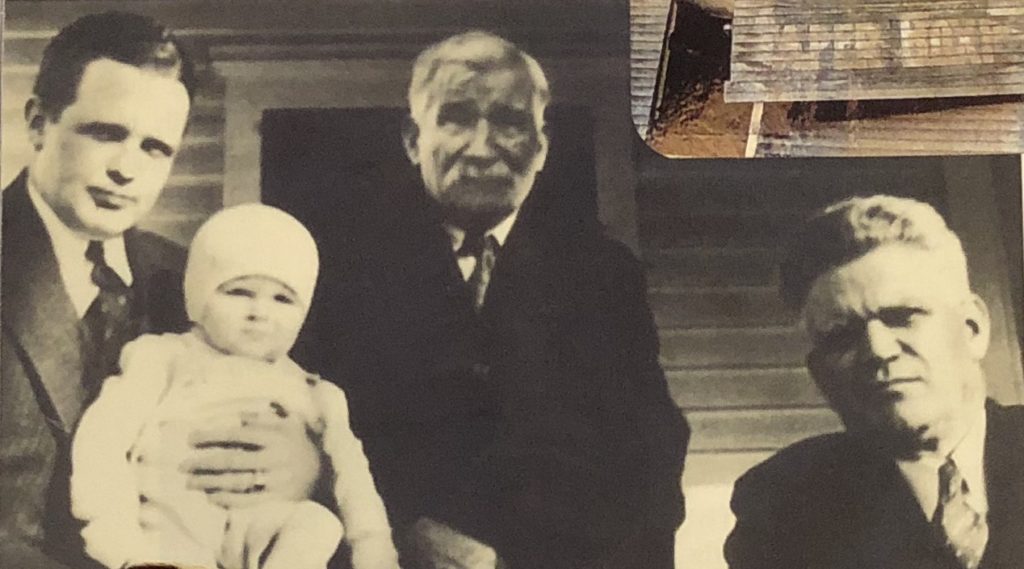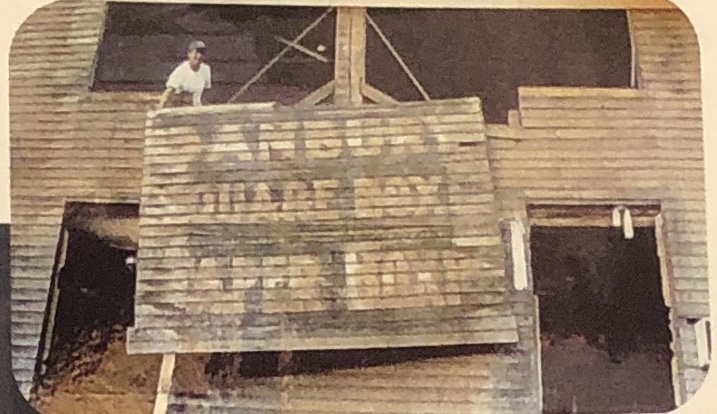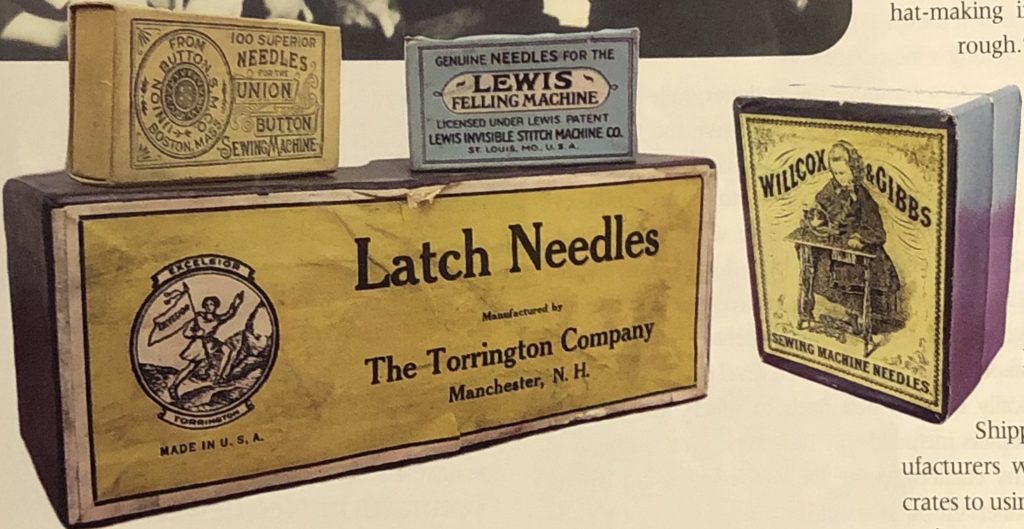By Diane Hassan
(c) Connecticut Explored Inc Fall 2010
Subscribe/Buy the Issue!
Images courtesy of the Danbury Square Box Company.
Hanging on the exterior of the headquarters of the Danbury Square Box Company is a 12-foot weathered wooden sign crudely inscribed with large block letters: “Danbury Square Box.” The white paint may be fading, but for the Allen family, the history behind those words remains sharp and clear.
On July 26, 1906, John J. Allen, Samuel A. Davis (son of E.S. Davis, who started the first paper-box manufacturing business in town), and Charles A. Rowan incorporated their box-making business. Mundane a product as a box might seem, Allen and his partners clearly saw opportunity in the business. And Danbury was a promising location. As historian William Devlin writes in We Crown Them All: An Illustrated History of Danbury (Windsor Publications, 1984), “The future seemed bright. Stores of increasing sophistication lined Main Street, providing goods and services formerly available only in larger centers…”
A year-end chronology of town events published in The Danbury News sheds light on the growth of the town during the summer of 1906. An estimated quarter of a million dollars was being spent on railroads, public works, and buildings in Danbury. Southern New England Telephone Co. installed its one-thousandth telephone in town, preparations were underway for the 38th annual Danbury Fair, and Governor Henry Roberts presented diplomas to a graduating class of 27 students of Danbury High School.
Considered “The Hat Capital of the World,” Danbury provided 25 percent of the nation’s finished hats and supplied the hat-making industry with 75 percent of its “hats in the rough.” Though Allen was surrounded by businesses that served this thriving industry, he cleverly chose a name that, though it seems obvious today, distinguished his company from the three other paper-box manufactures in the area. In a 1985 Business Digest article, John J. Allen III said, “There were too many companies around making hatboxes. My grandfather and his partners wanted it known they did not make hatboxes, which were round.”
Allen’s product — the patented Allen Fiberboard Shipping Case — appeared at a time when many manufacturers were switching from shipping goods in wooden crates to using lighter, less expensive containers. In addition to saving customers money, the Allen case was collapsible and thus easier to store than a crate. The 1912 town directory listing for The Danbury Square Box Company reflects an ever-expanding line of offerings including “Fruit Cartons, Wedding Cake Boxes and all kinds of paper boxes in all sizes for all purposes.”

left to right: John J. Allen holding his son, John J. Allen III, Thomas Allen, and John J. Allen Sr., founder and owner of The Danbury Square Box Company, c. 1938. Courtesy of The Danbury Square Box Company
An early company ledger of sales and purchases lists customers from near and far. Clients included The Danbury Shirt Factory, Danbury Pharmacal, the Green Soft Hat Company, and Rogers Silver Plate Company. The company manufactured cardboard ice-cream containers for The Danbury Creamery and designed, manufactured, and shipped boxes to the Easter Underwear Company and the Pneumatic Cushion Rubber Heel Company, both located in Boston, and The True Shape Hosiery Company in Philadelphia. Decorative matchboxes were made for The Diamond match Company of Southford, Connecticut.
In 1906, the Danbury Square Box Company had established its factory inside the walls of a Danbury landmark. The former Danbury courthouse and town hall was built in 1823 and hosted the first Catholic Church services in Danbury, and newspaper publisher P.T. Barnum once stood trial there for libel. Having determined that the structure was outdated and could no longer accommodate the civic needs of the growing town, the city sold the building and its contents at auction on March 8, 1899. Mayor Charles Kerr placed the winning bid and acquired the building for $100, with the understanding that it had to be moved within two weeks. Kerr transported the 250-ton building across Main Street to property he owned on Taylor’s Lane, where it was resurrected upon a new foundation.
For a time, the mayor used the spot for his patent-medicine business and for the manufacture of a cure-all called Linonine. By 1907, however, Kerr was a partner and serving on the board of directors of the Danbury Square Box Company, where the company took up residence. John J. Allen, who served as the firm’s secretary, eventually became president and sole owner of the company and the building in which it was housed.
Production took place in this old courthouse until 1976, when a larger, more modern factory was built on Broad Street, near the Still River on the spot where Danbury’s first paper mill once stood [See “When the River Ran Black,” Winter 2020-2021.]. The old building functioned as a warehouse until 2005, when the city bought the property and razed the structure to make way for Elmwood Hall, a new senior center built on the site.
Mike Allen, great grandson of John J. Allen, is the fourth generation of the family to own and manage the family business along with his wife Chriss Ann. “We’re a mainstay in Danbury,” said Chris Ann, “and our history is a big selling point for our salespeople.”
One hundred and four years of history in Danbury has not been without its trials for the Allen family. After a commitment to build their new facility on Broad Street, the deal to sell the property on which the old courthouse stood fell through. This put the business in jeopardy. There was no buyer for the courthouse building, and some of their biggest accounts (such as Berol, Fine Tool Company, and Unimation) were leaving town even as their own huge construction project was underway. John J. Allen III, owner at the time, said in a 1989 Danbury News-Times article, “I remember my grandmother telling my grandfather to go back to work for just one more day, and he did. There was no way I was going to give up without a fight.” He began looking for new accounts and ways to expand the business, focusing more on special services and not just manufacturing. This was a time when promotional packaging and fulfillment services became a key part of the business.
Although the economy has warranted a recent staff cut, the company continues to invest in equipment and technology. Danbury Square Box maintains the qualities upheld by its founders: reliability, innovation, and a willingness to adapt as needed.
“Danbury Square Box has managed to change with the times and outlast many of the companies that it once served,” said Allen. “I can say that with pride. The fact that this business was started by my great grandfather, that the hat manufactures have come and gone and that we’re still here – that’s exciting,” he added.

The sign from the original Danbury Square Box Company building was removed, siding and all, and hung in the new factory when the company moved to new headquarters in 1976 — and moved again in 2005. Courtesy of Danbury Square Box Company
“The longevity of the Danbury Square Box Company is a testament to the Allen family, as well as the City of Danbury. Given all the changes they’ve seen, they’ve remained a growing and thriving business here for generations,” said Brigid Guertin, executive director of the Danbury Museum & Historical Society.
“I remember being in that factory when I was young,” said Allen, when asked about the old courthouse building. He recalled one particular feature of the place: “The doors,” he said, “The doors were huge. I also remember the beautiful trim around them and the large windows,” he added. These massive nine-foot double doors served as the loading-dock entrance.
In the early hours of August 15, 2005, members of the Allen family visited the old factory a final time before it was razed. They came armed with a plan to retrieve a memento before it was destroyed — the original Danbury Square Box sign.
Fifteen-year-old John J. Allen V, known as Jake to his family and friends, spent some time during his school vacation applying several coats of shellac to that old wooden sign. Not just a sign: a 12-foot-square painted piece of history.
Diane Hassan is the research specialist for the Danbury Museum & Historical Society, where she fields genealogy and local history requests about her hometown. She is also a freelance writer who contributes regularly to regional news and genealogy publications.
Explore!
Read more stories about products made and invented in Connecticut on our TOPICS page.
And these stories about Danbury:
“Marian Anderson Studio”
“Rose Wilder Lane: Little House in Connecticut”
“Rediscovering Albert Afraid-of-Hawk”
“When the River Ran Black,” Winter 2020-2021

